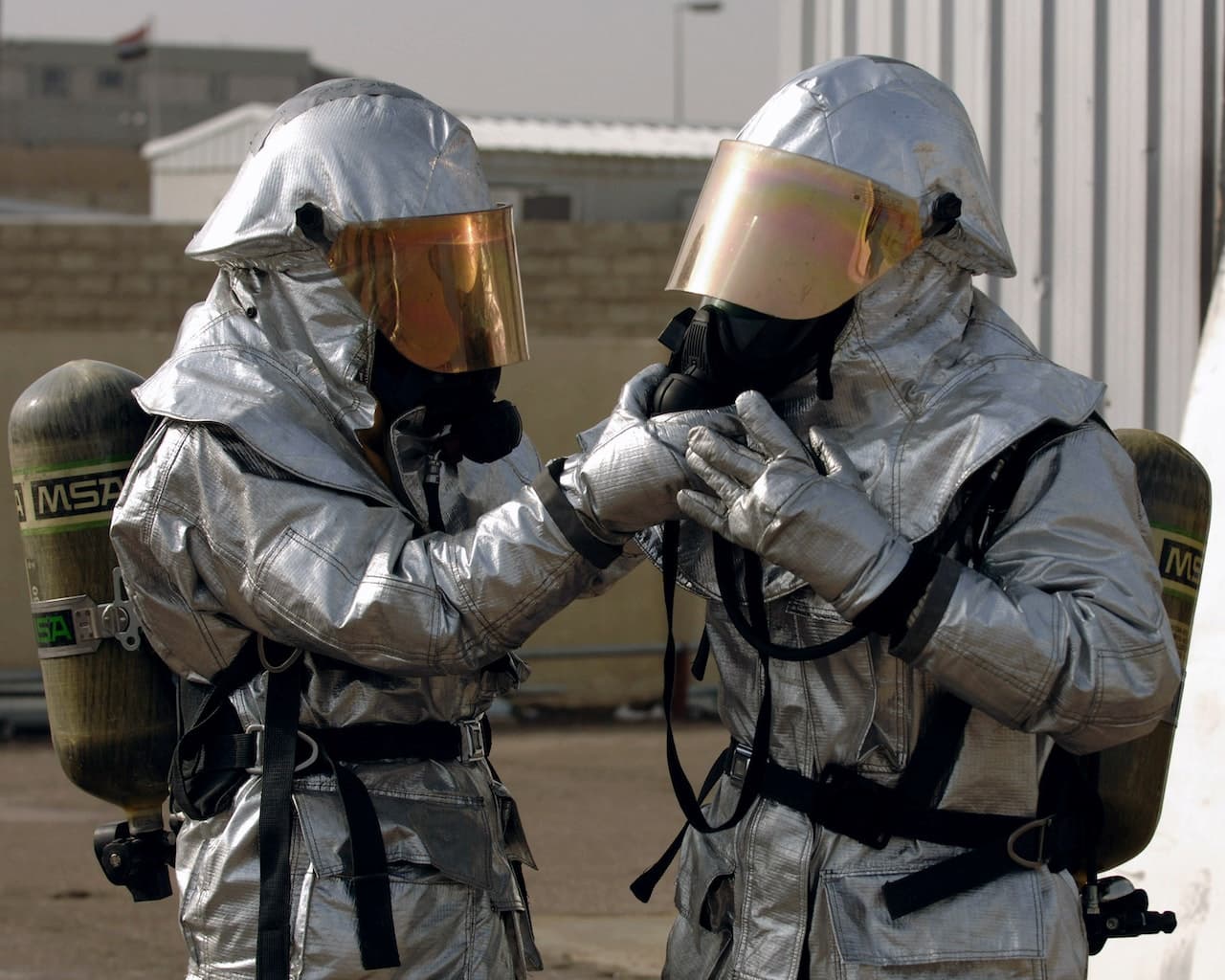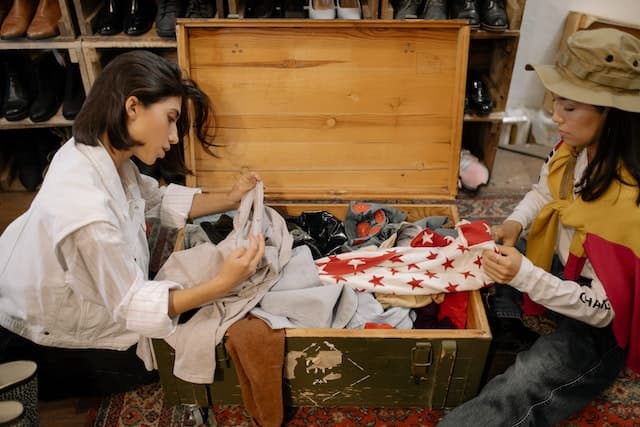How to Clean Thrifted Clothes

Dressing well is an important part of life; it is a priority for many people. Whether it be a new outfit for an interview or a more fashionable wardrobe to impress your friends, we all want clothes that look brand new and stand out. However, sometimes your budget doesn't always allow you to buy the newest clothes off the rack. Or maybe, you are looking for vintage clothing that you can find at an affordable price. Either way, fashion is a hobby for many, and one of the best places to shop is an online thrift store. If you’re going to take the plunge and shop for previously loved apparel, you’ll need to learn how to clean thrifted clothes.

It is important that your clothing reflects who you are and what you stand for, whether it's about a special occasion or a day at the office. But when you invest your hard-earned money in fashionable items, how do you ensure these assets remain up to par? This guide will describe how to wash thrifted clothes and the steps in caring for pre-owned clothes by focusing on the laundering process and storage options.
What’s the difference between thrifted and vintage clothes?
Before we begin, let’s establish the difference between thrifted clothes and vintage clothes:
Thrifted clothing
Thrifted clothes are pre-owned items that have been given to a thrift shop. Thrifted clothes are often used clothing that has been given away because the owner no longer has any use for them. For clothes to be donated and sold again, the clothes should be in good condition, clean, and free of stains.
This is not always the case as some thrift clothes purchased from Goodwill, Value Village, and (of course) GiveRise could potentially be in dire need of a cleaning (we’re not talking completely soiled but sometimes the items have been sitting around for a while).
All previously used clothes that are now on their second owner can essentially be called thrifted clothing.
Vintage clothing
Vintage clothes, on the other hand, are distinguished by their styles, age, fabrics, and even the brands they carry. Vintage clothes usually represent an era of fashion that is well known and recognized.
The definition of “vintage” refers to clothing that has been around for 20-100 years. You can expect a good portion of your grandpa's shirts or grandma's dresses to fall under this category. Vintage clothing is an acquired taste, with the desire for unique pieces and unique designs that are no longer in production.
Vintage clothes are usually kept because of their value as collectibles and good condition. You can find vintage clothing in our online thrift shop and occasionally with other brick-and-mortar shops like Value Village.

Myths about Thrifted and Vintage Clothes
Unfortunately, some myths about this type of shopping may dissuade people from even going into a store, to begin with. First of all, there is the myth that all thrift stores are full of nothing but ugly clothing and poor quality.
This is simply not true; in fact, many second-hand thrift stores receive high-end merchandise from people who have designer items and simply can’t bear to throw them away because it would be such a waste. In fact, if you’ve ever been to the Good Will on Vine St in Hollywood-it’s an absolute gold mine! True religions, G-Star jeans, and the occasional Gucci bag are some of the gems you commonly encounter.
Another myth associated with second-hand stores is that they only sell old clothing. Although this is true in many cases because the inventory is donated, it really depends on shopping at the right time. There are a TON of barely used items that make their way into a thrift shop. Consistency and persistence are huge assets when thrift shopping.
You never know what you’re going to get or when you’re going to get it. And that’s half the fun of it!
Now let's get back to our main topic, caring for your Pre-Owned Clothes.
The process of caring for Pre-Owned clothes
Care for fashionable but affordable clothing has a few steps to take. Once you know how to properly care for your clothes, you can extend your investments' lifespan. The following is a step-by-step guide on thoroughly cleaning, disinfecting, and dry-cleaning your thrift or vintage clothes.
Find out where your clothes came from
The first step to caring for your Pre-Owned Clothes is finding where the clothes were sourced from. If you bought a thrift shop shirt, it would be wise to know if it came from large chain thrift shops like Goodwill or a smaller second-hand store. If you bought a vintage coat at a shop like Value Village, or any of these large chains you need to vet the clothes with more care.
Smaller companies with less selection than those larger chains will go through a rigorous screening process. Whereas Value Village will tell you that you’re buying “as is” which also means “as it came!” This translates to “these items haven’t been washed or screened with a fine tooth comb-so beware!”
The knowledge of your item's source will help you gauge the chances of the item being in good condition and if there is any chance that it has been inspected properly.
It is also important to know if the item was manufactured by a well-reputed brand or cheaply made with poor quality material. For specific items, this will tell you which methods to use and what types of cleaning agents and detergents you should use on the clothing item.
For example, you would use dry-cleaning chemicals for synthetic, treated fabrics. You would also pay attention to the tags on natural fabrics made with dyed materials and those more fragile for specific cleaning instructions.

Implement your own standard for vetting “new-to-you” clothes
After discovering where the Pre-Owned Clothes came from and what condition they are in, the next step would be inspecting them to ensure they are not stained, damaged, or soiled. You should always inspect clothing items for any issues that may affect their wearability.
If you find any defects or stains on the belongings you want to purchase, it is worth considering if you can mend, fix or remove the stains from them. Consider the cost of repairing vs the long-term value. Are the clothes worth the effort because of how original they are? Would you be hard-pressed to find alternatives?
Ultimately, knowing the effort to repair any damage will determine if you wanted to purchase the item or not. Know that stains are usually easier to remove than other structural damages.
You’ve found a good deal if the stains and damage are minimal, the garment is well worth repairing for the price you’re paying.
Only use recommended stain removal techniques
It’s not uncommon to purchase a piece that needs a little fixing up. It’s part of the thrifting experience. As long as you know how to clean stains from your clothes you’re all good. First, check the stain and see if you can determine what it is exactly. You can find a solution for every stain by simply searching Google.
Most food stains can be removed with homemade stain removal solutions. For example, warm water and a detergent solution can easily remove most food stains. You can even use baking soda and vinegar on most fabrics. Lemon also has cleansing properties.
Be aware that if you cannot tell what the stain is made from or if it is just not coming off in the wash, you may need to try a different method. Some succulent cleaners effectively remove stains like tea leaf stains and even ink marks (a succulent is a plant, btw).
If all else fails, a good old-fashioned white vinegar will do the trick. Vinegar will also remove stains from sheets, cutlery, and clothing. You need to quickly search the internet to see all the different types of stains and how to remove them.
If you have an item of clothing that has been worn for a longer period, sweat and dirt may have built up in the fabric. This may cause the fabric to be extremely soiled or stained. This is when you would use a conventional detergent (e.g., Tide) to clean the clothing. This will help to lift the grime, stains, and dirt. You can either wash the item in a washing machine or by hand.
If your clothing is wrinkled from being stored, you may want to hang the item out to dry or iron it before putting it on.
You’ll feel fresher with a deep clean
Deep cleaning thrifted clothes is an important step before wearing them. You will want to make sure that the items are really clean, but you don't want to ruin them by using excess cleaning products and too much effort. Before the deep cleaning, check the label on the clothing. This will give you specific instructions on how to clean the item without ruining it.

When in doubt use gentle cycles
If the clothing is machine-washable, set your washing machine to the delicate cycle and use a gentle detergent. Materials such as cotton, linen, and polyester can be machine-washed on a delicate cycle, while other fabrics such as silk or wool may require hand-washing.
After the delicate cycle is finished, check the clothing to see if the stains have come out. If they have not, try spot-treating the stains with a little bit of detergent and then rewashing on the delicate cycle. You can also add vinegar to disinfect the clothing and help remove any remaining stains.
Hand washing is sometimes unavoidable
If the clothing is not machine-washable, you will need to hand-wash the item. Fill a basin with water and add a mild detergent. Submerge the clothing in the water and gently swish it until the detergent is evenly distributed.
Let the clothing soak for about 15-30 minutes, and then rinse thoroughly with clean water. Repeat this process if necessary.
After washing the clothing, squeeze out any excess water and hang the item up to dry. If the clothing is made of a delicate fabric, you may want to lay it flat to dry instead.
Consult a green dry cleaner for info and services
If an item is too delicate to machine wash or hand wash, then you will need to take it to the dry cleaners. This is usually the case with clothing made of silk, wool, or other delicate fabrics such as detailed embroidery, sequins, and lace.
If the items have a lot of detail or have been chemically treated, then you may need the help of a professional. You can also bring the clothing to a dry cleaner that uses steam to press out any remaining moisture on fabrics.
Traditional dry cleaners use machines to press and tumble clothes to remove wrinkles, which may be unhealthy for some fabrics. However, you can find dry cleaners that use gentle steam to remove wrinkles from garments. Alternatively, you may want to use a service that uses ironing and hand pressing so that the clothes are not damaged.
Finding a reputable cleaner is important because you do not want your prized items to end up damaged or destroyed. You can also check reviews on the company and see what other customers have said about the quality of their services.

Thrifting is a win, win for everyone
Thrift clothes shopping can be a process but when you get it right it’s incredibly rewarding. Not only do you get great-looking clothes at a ridiculously low price but you’re helping the environment. The space in our landfills is running out. Keep doing your part and become a pro thrifter! The world needs more people like you!
